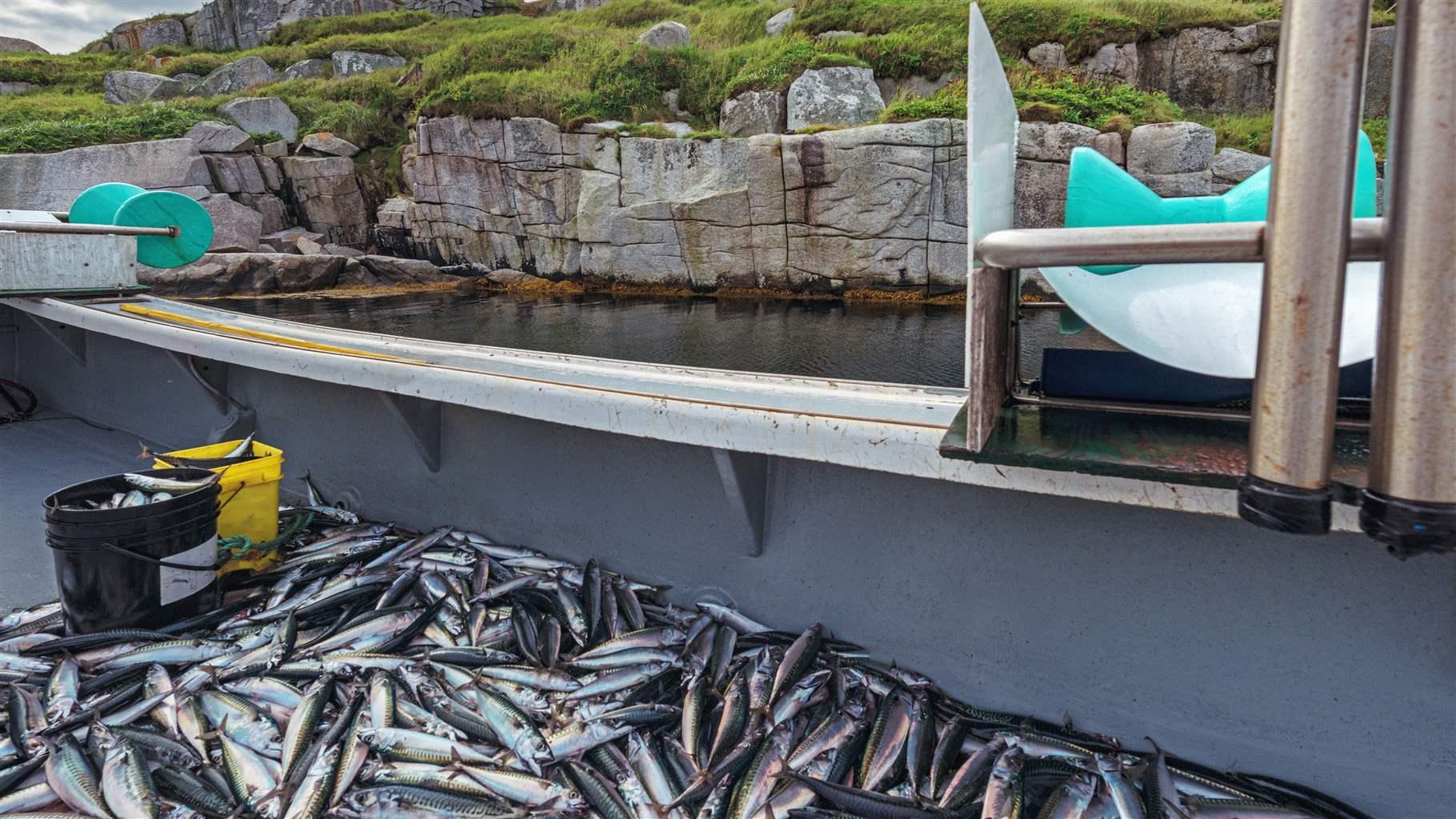In Setting Fisheries Rules, Northeast Atlantic States Must Consider Broader Ecosystem
Accounting for needs of predators and the changing climate can improve sustainability

Marine conservation policies often fall into two categories: those that aim to protect marine life from human exploitation, and those that set the rules for sustainable use of those resources. The Pew Charitable Trusts, along with many other nongovernmental organizations and more than 120 governments, supports the Convention on Biological Diversity (CBD) pathway to protect and conserve at least 30% of the ocean by 2030.
But what of the other 70%? Science has shown that the exploitation of species through fishing has had the largest impact on marine ecosystems over the past 50 years. So how we manage fisheries outside of protected areas is enormously important.
A growing body of evidence shows that one key way to do this, alongside other science-based reforms that focus on sustainable management of catches, is through an approach called ecosystem-based fisheries management (EBFM), which accounts for the effects of fishing activity on a range of species—not just the one targeted—and on the affected ecosystems.
Several international agreements concerned with biodiversity, including the CBD as far back as 1995, have adopted ecosystem-based management approaches.
EBFM requires not only recognition of the impact of fishing, but also how fisheries and ecosystems are affected by environmental factors. In particular, as climate change warms the ocean and drives fish populations to shrink, grow or shift their ranges, managers must adjust the rules to help species survive and maintain their role in the ecosystem. EBFM can also be a tool to help deal with the increasing political tensions arising from the sharing of shifting, in-demand stocks.
To date, countries have made many commitments to sustainable use of marine living resources through EBFM. And they have a chance to further advance those efforts when United Nations member States meet from 17-19 May to review implementation of an ecosystem approach to fisheries management. To make EBFM work in practice, countries must develop concrete and actionable tools that fisheries managers and stakeholders can understand and gradually adopt.
The opportunities for EBFM in the Northeast Atlantic
The United Kingdom, the European Union, Norway, the Faroe Islands, Greenland, Iceland, and the Russian Federation are involved in the management of Northeast Atlantic fisheries, as well as one regional fisheries management organization, the North-East Atlantic Fisheries Commission (NEAFC), which deals with fish stocks in the international waters of the region. Assisting these managers is one of the world’s most credible ocean science advisory bodies—the International Council for the Exploration of the Sea (ICES)—a factor that should help those fisheries managers follow through on their repeated commitments to sustainable fishing and ecosystem approaches. These managers have further impetus to implement EBFM because they also face potential governance challenges due to shifts in the ranges of fish populations, such as mackerel, as a result of climate change. Despite this, Northeast Atlantic States and NEAFC still manage major pelagic stocks, such as blue whiting, mackerel and herring, and forage fish stocks like sprat, on an individual basis and not as part of their ecosystems. And despite their commitments to sustainability, managers still set rules with the main goal of extracting as much fish as possible every year.
Here are several actions that fisheries managers can take to put Northeast Atlantic stocks on the EBFM track:
1. Improve assessments and scientific advice through the inclusion of ecosystem considerations:
Northeast Atlantic countries request the scientific advice they use to make management decisions from ICES. These countries have all formally committed to base their decisions on scientific advice that includes ecosystem considerations, but they rarely request that particular advice from ICES. Countries should specifically ask ICES to provide available information on ecosystems, such as interactions between prey and predators or the impacts of climate change on specific fisheries.
2. Define precautionary ecological management objectives and indicators:
Countries should request that ICES develop what are known as “ecological reference points,” similar to those used by fishery managers on the U.S. East Coast for menhaden. In setting menhaden catch limits, managers consider not only the size of the population but also the needs of predator species, such as striped bass and osprey. In the Northeast Atlantic, managers could set rules for stocks such as herring, North Sea sandeel and sprat in the same way, with scientific support and advice from ICES.
3. Test and adopt long-term management strategies (LTMS) that incorporate ecosystem considerations:
LTMS, also known as harvest strategies in other fora, are pre-agreed frameworks for making management decisions such as setting catch limits. When developing LTMS, managers can incorporate ecological management objectives (for example, leaving enough food for healthy predator populations) and reference points for use in decision-making. Scientists can test LTMS for how they perform against management objectives as well as ensuring that these strategies are attuned to ecological changes such as shifts in stock distribution or productivity because of warming waters. Including such ecological considerations would give decision makers a more informed idea of what EBFM looks like in practice and a better understanding of the trade-offs, such as adjusting catch limits or using spatial measures, associated with their decisions.
4. Assess the role of temporal and spatial measures:
Although securing ecosystem-informed catch limits is a vital step towards EBFM, that might not be enough; continued mismanagement of Northeast Atlantic fisheries may necessitate additional, precautionary action. In particular, managers should consider protecting nursery, spawning and migration grounds, or areas where predators can feed on certain species undisturbed by commercial fishing. In the Northeast Atlantic, such measures could include protection for the spawning and juvenile stages of the overfished mackerel population, as well as greater restrictions on fishing for North Sea sandeel, to maintain its critical role as prey for seabirds that are on the International Union for Conservation of Nature’s Red List, such as the black-legged kittiwake.
The Northeast Atlantic could be a pioneer for EBFM, and fishery managers there have the tools to achieve that. Now they must move towards adopting and implementing this modern approach to fisheries management to help ensure the sustainability of our ocean and all the life it supports.
Jean-Christophe Vandevelde is a manager and Dan Steadman is an officer for Pew’s international fisheries project.












